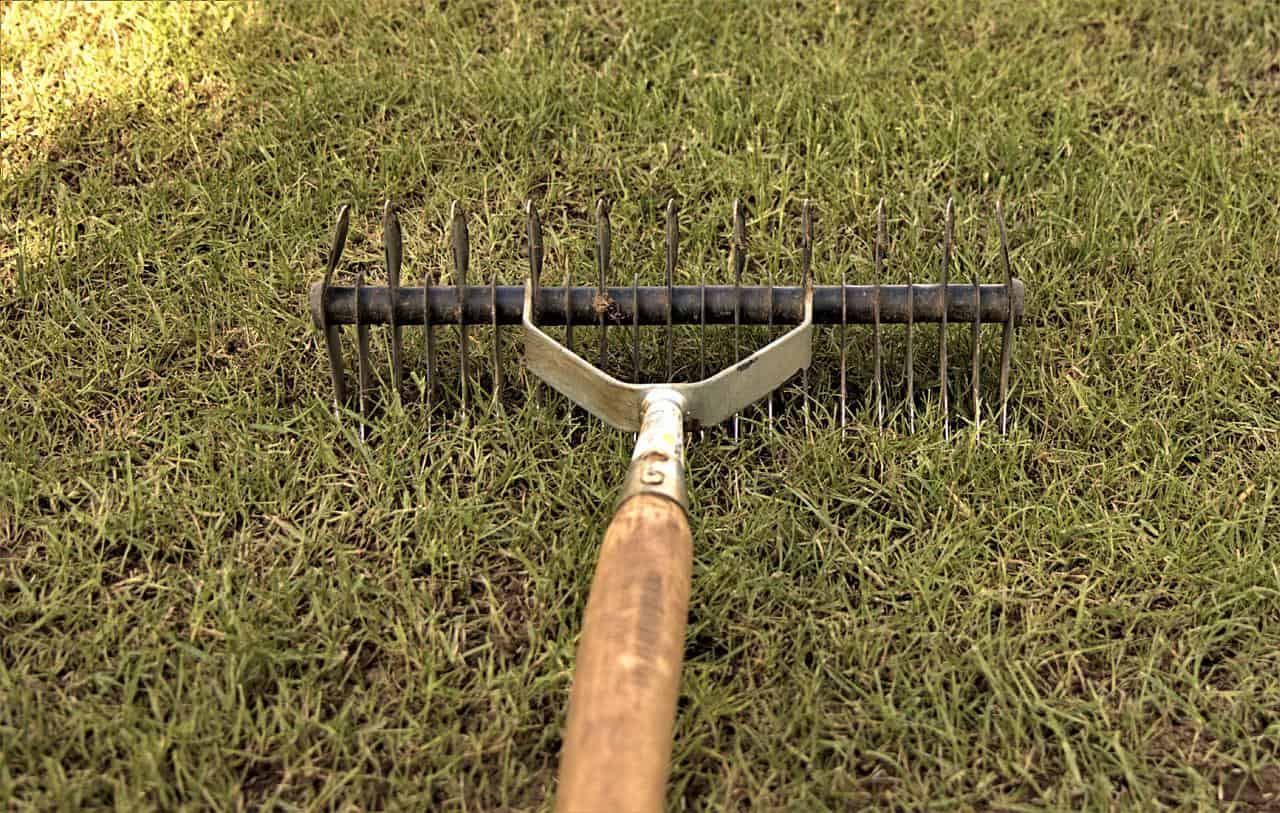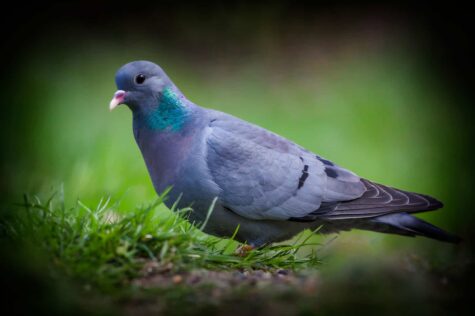Slimy, shell-less and sabotager of garden plants and seedlings, slugs can be the bane of a gardener’s life. There are many species of these curious gastropod molluscs, and at times, it may feel as if they are all residing in your garden. It’s estimated that just one square metre of the garden can house as many as 200 slugs with 95% of them living underground.
If you’ve had enough of slugs in your lawn, it’s time to take action. From slug-repelling copper tape and irresistible beer traps to ninja nematodes and crafty barriers, keep reading to discover the best tried and tested ways to protect your plants from mucousy mutilation.

Image credit: @nominoelle
Are slugs bad for your lawn?
Although slugs won’t eat much in the way of established turf, they will munch on grass seeds and young seedlings so can be bad news for a new lawn. It’s unlikely that slugs will kill your grass but they can have an impact if you’re trying to grow a new lawn or overseed an existing one.
Because slugs have teeth, around 27,000 of them, they’ll chomp their way through vegetables, bulbs and seedlings with ease, deftly severing stalks and leaving large holes in leaves.
It’s not all bad news though, slugs, along with snails, are an essential source of food for mammals such as hedgehogs, badgers and foxes, as well as birds, amphibians and beetles. Slugs are an important part of the garden ecosystem and many animals would suffer without them. Slugs can also help to remove rotting vegetation.
Slugs favour warm, damp conditions, which is why you’ll rarely see them in the colder months of the year when they bury themselves deep in the soil. Temperatures need to be above 5°C for slugs to crawl around and you’re most likely to find them on your lawn after rainfall.
Keep reading to discover which slugs you’ll commonly find sliming their way around your garden.
Common UK garden slugs
Around 40 species of slugs are found in the UK and not all are considered pests, it’s estimated that roughly 20% of all slugs are plant eaters, the rest reside harmlessly in the ground, contributing to a healthy garden ecosystem. Some species, like the leopard slug, even predate other slugs. If you’ve spotted grey or black slugs in the grass, they’re most likely to be one of these:
1. Grey field slug

Image credit: @ramblinginthewoods
The small but mighty grey field slug is the most common species in the UK. It’s a mainly nocturnal feeder, feasting on plant crops and seeds. It’s recognised as the most significant slug pest and can devastate crops of oilseed rape.
2. Black garden slug

Image credit: @wild_sligo
One of the largest species, the black garden slug can reach a whopping 15cm in length. Also found in shades of red and brown, these beasts of the slug world prefer rotting vegetation to fresh plants so won’t cause much damage to your garden.
3. Leopard slug

Image credit: @keytesgarden
These distinctive slugs are commonly found in gardens and prefer to snack on rotting vegetation, fungi and even other slugs. Growing up to 16cm in length, leopard slugs won’t damage your garden plants.
4. Balkan threeband slug

Image credit: @marcoriverasb
Commonly found in the South of England, this striped slug is often found in gardens and allotments and can be a plant pest, especially in greenhouses.
5. Sowerby’s keeled slug

Image credit: @uk.inaturalist.org, via CC BY-NC 4.0
This small, brownish-grey-coloured slug grows to about 7cm. Often found in gardens and woodland, these slugs favour tubers, plants, bulbs and roots.
What causes a slug infestation?
If you have a garden or allotment, you will undoubtedly have encountered slugs and you will, at some point, face plant damage due to these ravenous creatures.
Living with slugs is an inevitable part of having a garden and it’s impossible to permanently eradicate them. If slugs are causing a problem in your patch, there are several ways that you can tackle a slimy invasion.
How to get rid of slugs in grass
Whether you’re fed up with disappearing delphiniums and holey hostas or tired of digging up pitted potatoes, here are our top tips for deterring and removing slugs from your garden:
1. Grow plants that slugs hate
Although slugs are partial to many plants, there are a few that they won’t go near. Consider planting ferns, euphorbia, lavender, rosemary, hydrangeas and Japanese anemones. You won’t need to worry about slug damage and your garden will look and smell wonderful.
2. Use copper tape or mesh
One of the best ways to stop slugs from damaging your plants is to wrap copper tape around affected plant pots or place copper mesh at the base of the plant. Copper is one of the most effective slug repellents, the chemical reaction that occurs when slugs touch copper prevents them from crawling over it.
3. Install beer traps

Image credit: Homesteadandchill.com
Slugs can’t resist a brew and a jam jar or plastic container filled with beer makes an excellent trap. Pop a few beer traps alongside any affected plants and it’ll soon fill up with slugs. This isn’t one for the squeamish, however, as emptying the traps is pretty grim.
4. Water your lawn in the morning
As slugs are usually nocturnal, watering your lawn in the morning during dry spells is an effective way to keep these unwanted critters off your grass.
5. Create a prickly barrier

Image credit: @boerderijdebronkhorst
As slugs have such soft bodies, they won’t risk crawling over sharp surfaces. You can make effective slug barriers using crushed eggshells, cuttings from thorny plants, pine needles, cat litter and sand.
6. Attract slug-loving predators to your garden

Image credit: @halstead_biology
One of the most effective ways to tackle a slug infestation is to encourage natural slug predators into your garden. Consider creating a small pond to attract frogs and toads, lure predatory insects and birds by letting small areas of your garden grow wild, grow plenty of shrubs and provide shelter for small mammals.
7. Pick them off
A popular way to deal with a slug infestation is to pick them off the grass yourself. You’ll need to do this at dusk from spring onwards. Try attracting slugs to a particular area of your garden to make the job easier. You can leave a pile of vegetable peelings or fruit skins which can be picked up and relocated to the compost heap.
8. Use nematodes
Nematodes are microscopic parasitic worms that can be applied to your lawn and will work against various garden pests such as slugs and leatherjackets. You’ll need to choose a specific slug-targeting nematode application which is usually mixed with water and sprinkled over wet grass. Nematodes will kill slugs within 6-10 days and need to be re-applied for best results. Natural nematodes are safe to use around people and pets and won’t harm the environment.
9. Remove slug shelters

Image credit: @ruby_elise_seager
Slugs love to hide during the day. Fallen leaves, old plant pots and saucers, and anywhere that’s dark and damp creates the perfect hideaway. You can try to reduce slug hiding spots or set up shelter traps using grapefruit or pumpkin skins, which you can regularly check and dispose of.
10. Use organic slug bait
If you’re looking for an effective slug killer for lawns, slug pellets are an effective way to stop slugs from damaging potted plants, border plants and vegetables. An RHS study has shown organic slug pellets to be as effective as their non-organic equivalents.
Preventing slugs in your lawn
With the average garden hosting over 20,000 slugs and snails, it’s impossible to completely eradicate slugs or stop them from coming into your garden. However, by combining several of our suggested tips, you should be able to keep the slug population under control and protect your precious plants.

Image credit: @gardensalive__
FAQs
Do slugs kill grass?
Slugs won’t kill an established lawn, but they can damage a new lawn by eating grass seeds and seedlings. Try our slug removal tips to keep them away from your grass.
What causes slugs to come out?
Slugs are mainly nocturnal and won’t venture out in temperatures below 5°C. Expect to see slugs after rainfall and in damp conditions.
Does salt kill slugs?
Yes, salt is an effective slug killer, however, it can also damage plants so use it with caution.
What eats slugs?
Slugs have many natural predators including badgers, foxes hedgehogs, birds, frogs, toads, ground beetles and slow worms. Without an abundance of slugs, many of these creatures would perish.
Why do I have slugs in my yard?
Slugs are an essential component of the garden ecosystem. It’s estimated that the average garden contains over 20,000 slugs. Rather than trying to seek them all out (which is an impossible task), try combining our tried and tested slug removal tips to keep them under control.






